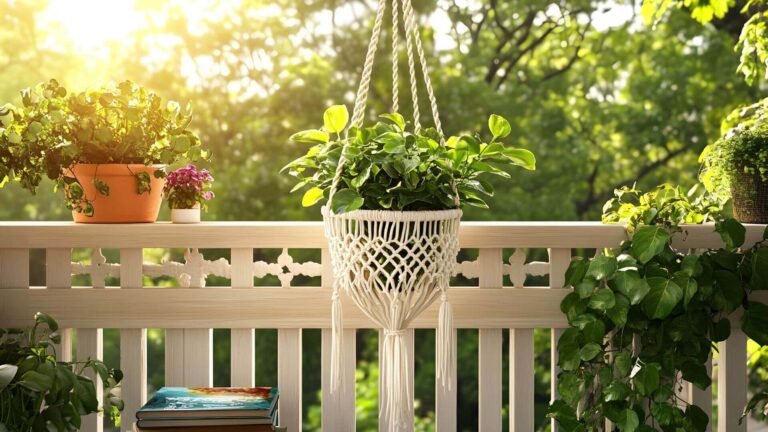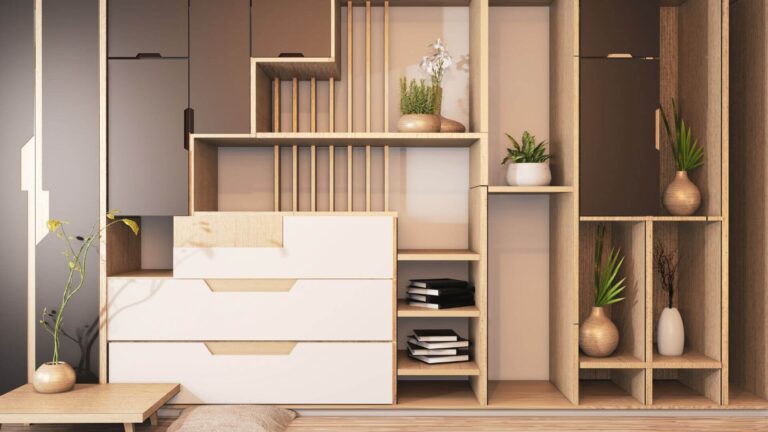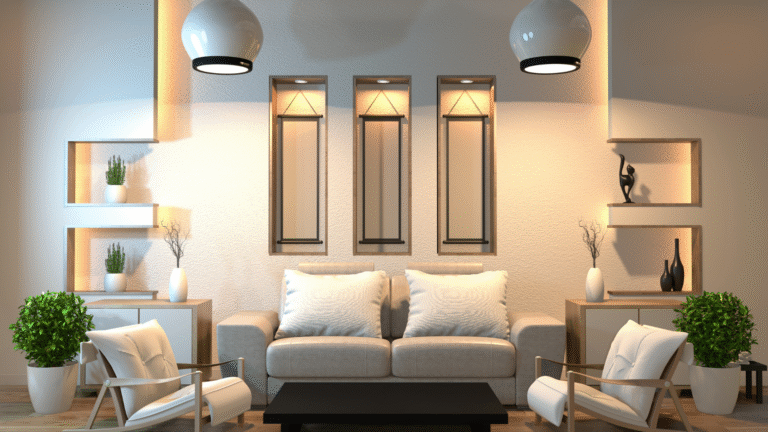Introduction
Ever walked into a living room that just feels right, no matter where you’re standing? Whether you’re entering from the hallway, sitting by the window, or looking in from the kitchen, everything flows together effortlessly. That’s not a coincidence. It’s an intentional design.
Designing a living room that looks good from every angle isn’t just for magazines or showrooms. It’s completely doable in real homes of all sizes. You don’t need expensive furniture or a degree in interior design. All you need is a little planning, creativity, and a few smart layout strategies.
Why Multiple Angles Matter
Most homes today have open or semi-open layouts, which means your living room isn’t viewed from just one spot. You might catch a glimpse of it while cooking, walking through the hallway, or even from the staircase. If the room is only styled to look good from one direction, it can feel unfinished or unbalanced.
A living room designed with every angle in mind feels more spacious, inviting, and cohesive. It makes a strong impression from all viewpoints and creates a space you enjoy being in.
Step 1: Start with a Strong Focal Point
A focal point gives your room structure. It’s the feature your eye is naturally drawn to first. It could be a fireplace, a large piece of art, a bold sofa, or a window with a great view.
Once you choose your focal point:
- Arrange your main seating area around it
- Avoid pushing all the furniture to the walls
- Let the space breathe with some room between pieces
By building the room around one anchor, you help everything else fall into place naturally.
Step 2: Create Zones Without Overcrowding
Living rooms often serve more than one purpose. You might use the same space to watch TV, read, entertain guests, or work. Instead of trying to make everything fit into one corner, divide the room into functional zones.
For example:
- Use a rug to define the main seating area
- Set up a reading chair with a floor lamp in another corner
- Add a console table behind your sofa for extra surface space
Keep clear walking paths between areas. Leave at least 30 inches of space between large furniture pieces so the room feels open and easy to move through.
Step 3: Be Bold with Furniture Placement
You don’t have to line every piece of furniture up against the wall. In fact, floating furniture—like placing a sofa in the middle of the room—can make the space feel more dynamic and thoughtful.
Try placing accent chairs at slight angles instead of straight lines. This softens the look and helps the room feel more relaxed. You can also use smaller pieces like ottomans, poufs, or benches to fill in awkward spaces and guide the eye naturally from one part of the room to another.
Step 4: Mix Textures and Materials
Design isn’t just about how things look—it’s also about how they feel. Mixing textures and materials adds depth to your living room, especially when viewed from different spots.
Here are some easy ways to add variety:
- Pair a smooth leather chair with a chunky knit throw
- Add a jute or wool rug beneath a velvet sofa
- Combine wood, metal, ceramic, and fabric finishes
When textures are well balanced, the room feels layered, interesting, and visually rich.

Step 5: Use a Consistent Color Palette
Color helps tie your space together, especially when it’s visible from multiple angles. Choose a primary color as your base and then add two or three accent colors that you can repeat throughout the space.
You might carry a deep green from the throw pillows to a plant pot or pick up a soft beige from the curtains and use it in your rug. This kind of repetition creates unity, but it doesn’t mean everything has to match. The goal is harmony, not sameness.
Step 6: Think Vertically, Not Just Horizontally
Many people focus only on the floor level when arranging a room. But vertical space matters just as much. Adding visual elements at different heights helps the room feel balanced and well-styled from top to bottom.
Some ways to add height and variation:
- Hang art or mirrors at eye level
- Use tall plants or standing lamps to draw the eye upward
- Mix shelves, low tables, and mid-height accessories to create visual rhythm
This layering adds depth and makes the space more dynamic from every viewpoint.
Step 7: Make Lighting Work for the Whole Room
Good lighting makes all the difference. One overhead fixture usually isn’t enough. To create a well-lit space that looks good from any side, layer your lighting.
Here’s what that can include:
- Overhead lighting for general brightness
- Table lamps or floor lamps for warm, ambient light
- Accent lights to highlight artwork or special features
- Natural light from windows, softened with curtains or sheers
By combining light sources at different levels, your living room becomes cozy, inviting, and visually balanced.
Avoid These Common Mistakes
Even with the best intentions, some design habits can get in the way. Here are a few things to avoid:
Too Much Clutter
Trying to style every angle can lead to over-decorating. Give the eye space to rest. Less is often more.
Ignoring Foot Traffic
Furniture that blocks pathways makes the room feel cramped. Always check that people can walk through comfortably without bumping into things.
All Furniture the Same Height
When everything is on the same visual plane, the room feels flat. Mix tall and low pieces for balance.
Everything Against the Wall
While it may feel like you’re creating more space, pushing furniture against the walls can make the room feel empty in the middle.
Sample Layout Idea
Not sure where to start? Here’s an example layout that looks good from every angle:
- Sofa floated 12 inches away from the wall, facing a large piece of art
- Two accent chairs placed at angles to form a conversational triangle
- Rug large enough to sit under all main seating pieces
- Console table with decor behind the sofa
- Tall plant in a back corner, balancing a standing lamp on the opposite side
- Coffee table with mixed decor items like books, candles, and a small tray
Take a step back and look at the room from each entrance. If your eyes naturally flow from one area to another without confusion or clutter, you’re on the right track.
FAQ: Designing a Living Room from Every Angle
1. How do I make sure my living room looks good from the entryway?
Keep the entrance clear, and position your main focal point where it’s visible right when you walk in. Add a mirror or artwork to welcome the eye.
2. Do all the furniture pieces need to match?
Not at all. Mixing shapes, styles, and materials adds personality. Just be sure they complement each other in tone and scale.
3. How do I avoid visual clutter in an open living room?
Use consistent colors, limit large decor pieces, and avoid over-accessorizing. Group smaller items and give each piece room to breathe.
4. What’s the best rug size for a living room?
Ideally, choose a rug that all your main seating fits on—or at least the front legs. This helps define the space and pulls everything together.
5. Can I design a good layout in a small living room?
Absolutely. Focus on flow, scale down furniture, float pieces strategically, and use vertical space to open up the room visually.
Final Thoughts
Designing a living room that looks great from every angle isn’t about following rules. It’s about understanding how space, light, and movement work together. Whether you’re starting fresh or refreshing what you already have, focus on flow, balance, and comfort.
Take time to walk around your room. Look at it from every entry point. Move a chair, shift a lamp, remove something that doesn’t serve the space. The best designs often come from small changes and thoughtful details.
When your living room feels right from every side, you’ll notice. And so will everyone else who walks in.







